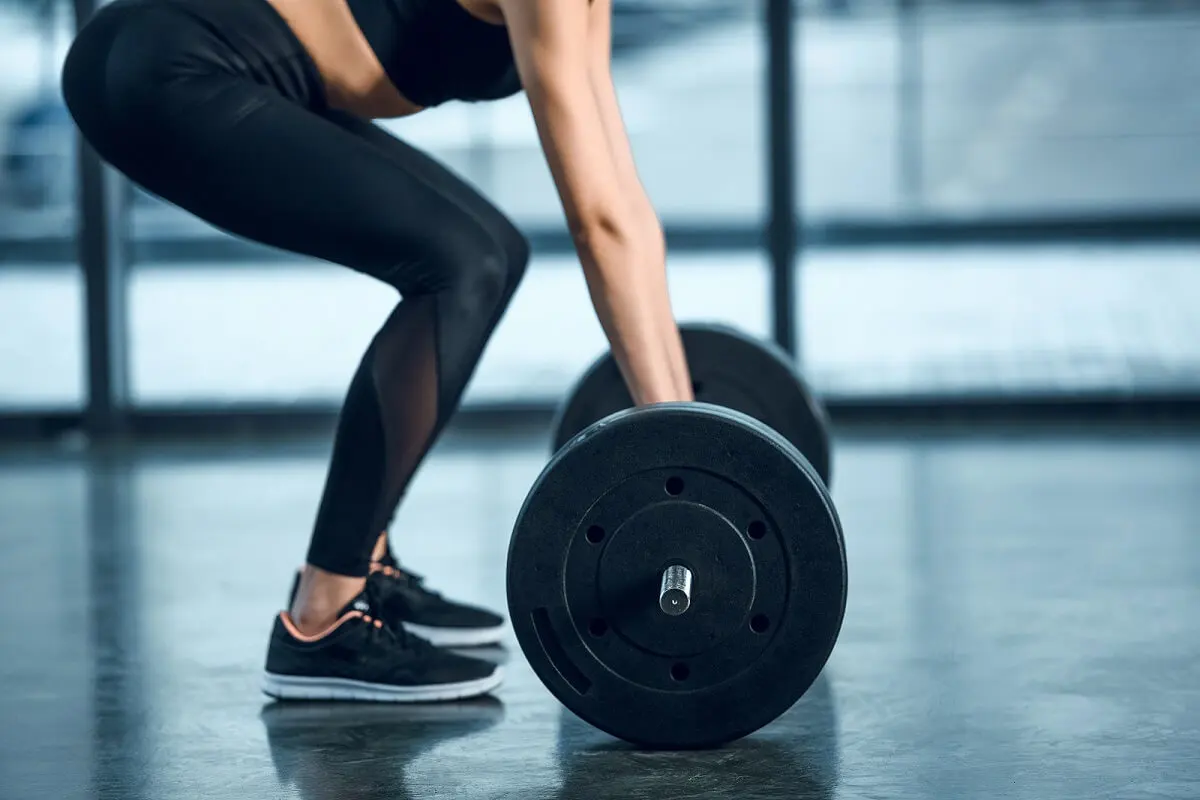What are Bisets, Trisets, and Supersets?


Reviewed and approved by the doctor Diego Pereira
Bisets, trisets, and supersets are terms that gym enthusiasts have heard at some point. Along with the so-called giant sets, drop sets, pyramid sets, and cluster training, they’re the most popular types of sets among experienced athletes. In principle, they are aimed at achieving metabolic stress and are an alternative when you have little time to complete a routine.
These three variants consist of eliminating the rest time between two or three sets through agonist or antagonist exercises. Because of the level of tension, strength, and endurance required, they’re not recommended for the average user, nor as a substitute for regular training.
Even so, bisets, trisets, and supersets are an alternative that every gym lover should occasionally include in their routine. In this article, we’ll tell you what they consist of, what muscle groups and exercises you can work on, and what advantages you receive from them.
Bisets
To know what bisets, trisets, and supersets are, we must first understand what a conventional routine consists of. In short, most athletes train based on what is known as single sets. This training method is based on performing a certain number of sets (generally varying between 3 and 6) with the help of chains of repetitions (ranging from 3 to 12).
A time interval is included between each set, just enough time for the muscle to recover depending on what the athlete is looking for. The sets are based on the same exercise. The basic principles of single sets are partially discarded in a routine of bisets, trisets, and supersets.
Bisets are based on agonist exercises. In other words, they’re those that involve the same muscle groups. As the name suggests, they revolve around two sets of exercises whose novelty is to eliminate the rest time between each one. Let’s take the biceps muscle as an example. A biset routine might start with the following examples:
- A standing barbellcurl and dumbbell hammer curl
- A scoot bench bicepscurl and spider biceps curl
- A TRX bicepscurl and alternating dumbbell curl
In this case, the routine is based on three bisets, although of course more can be included based on the athlete’s strength and goals. The rest time between one exercise to another in the same bisets should be minimal, just enough to stretch the muscle, prepare to execute the movement, and concentrate on lifting the weight. The time between bisets varies between 60 and 120 seconds.
We think you may also enjoy reading this article: This Is the Simple 15-15-15 Routine that Keeps Jennifer Aniston in Shape at 53
Trisets

Trisets follow the same style as bisets, only in this case, the number of exercises from the same muscle group is increased to three. They’re generally recommended only for those who are already familiar with cycles of two, as endurance and strength are much more demanding.
This type of variation is usually done on large muscle groups, because they can support a greater load. An example of a triset routine for the chest is as follows:
- A flat benchpress with a barbell, dumbbell incline bench press, and dumbbell pullover
- A decline benchpress with barbell, dumbbell straight bench press, and pullover with barbell
- An incline benchpress with barbell, dumbbell decline bench press, and close grip straight bench press
You can also include pulley flutter and weighted push-ups as an alternative. The important thing is to design the routine based on your objectives and distribute a weight that you can support during three consecutive sets with only a few seconds of rest.
In this regard, and considering the muscle wasting generated by the trisets, it’s not advisable to do more than three trisets for the same muscle group. Nor is it recommended to exceed the number of times you include them in your monthly routine.
The variants that integrate more than three exercises are called giant sets and are intended in principle for very experienced athletes.
Prefatigue
Now that you know what bisets and trisets exercises are all about, it’s time for you to know other terms related to this training method. The first of these is prefatigue. As its name suggests, it consists of fatiguing a muscle through isolated exercises before performing a compound exercise.
This variant was popularized by bodybuilders such as Mike Mentzer and Arnold Schwarzenegger, and is only recommended for experienced athletes. The principle that governs its application is that when performing a compound exercise there are muscles that are exhausted before others (when doing chest, the triceps muscle fatigues earlier as it’s weaker and smaller).
Because of this, the main muscle isn’t fully stimulated. For this reason, it’s pre-fatigued through an isolated exercise before proceeding with the compound exercise. There’s no strong evidence in its favor, although thousands of athletes tout its effectiveness.
In general, more than two sets of pre-fatigue exercises should be avoided. At the same time, it isn’t recommended to exceed more than 8 repetitions. A classic example is the dumbbell chest press. The movement is done slowly and looking for a greater involvement of the muscle.
Post-fatigue
This is a modality that operates on the same principle as the pre-fatigue exercises, only this time, it’s done in reverse. First, the compound exercise is performed and then the focus is on an isolated one. Some prefer this modality because they can develop the series (bisets or trisets) without initial muscle fatigue and with greater efficiency.
Post-fatigue exercises are often used only in weightlifting, because it’s easier to isolate a specific muscle. In calisthenics, this is a bit complicated. An example is doing triceps extensions in a pulley after doing a bench press routine for the chest.
You can alternate both modalities in the development of bisets and trisets. However, we’d like to reiterate that they are only recommended for experienced lifters, since the initial or subsequent fatigue conditions the performance and the weight that the muscle group can support.
Supersets
Finally, we also find the exercises that are developed in supersets. These are sets that are performed without any rest, but this time of antagonistic muscle groups. In other words, two different exercises are performed in a superset without a time interval and activate different muscles.
Supersets are more popular than bisets and trisets because they allow a muscle group to be partially rested while the second exercise is performed. It’s also known as supersetting and takes into account, at least in principle, six antagonistic zones:
- The biceps and triceps
- The chest and upper back
- The quadriceps and hamstrings
Although groups can be created from other muscles, these are the classic ones to work in a superset routine. They’re usually composed of two sets, but can also be composed of three or four. An example of this modality is the following:
- Biceps curl with dumbbell and triceps extension in the pulley
- Decline bench press and one-handed dumbbell rowing
- Quadriceps extension on a machine and Romanian dead weight
These exercises synthesize the muscle groups presented. The rest between each superset varies between 60 and 120 seconds, although it can be extended a couple of seconds more depending on the objectives and the amount of weight lifted.
Like this article? You may also like to read: UFC World Champion Leon Edwards Shares His Workout Routine and Training Tips
What are the benefits of supersets and compound sets?

Bisets, trisets, and supersets should be included occasionally in routines as a variation of the classic exercises. Some of their benefits are the following:
- Promotes metabolic stress: studies have shown that biset, triset, and superset workouts promote metabolic stress, which is advantageous in resistance routines aimed at muscular hypertrophy.
- Improves endurance: research suggests that supersets help improve muscular endurance, at the same time that you get greater strength in the groups worked.
- It’s an alternative to reduce training times: dispensing with a rest time between one set and another and grouping them in a set is of great help when athletes do not have much time to train. They have been shown to be effective in this order, although evidence suggests that rest times should be respected after the routine to avoid extra fatigue.
- They are useful to overcome stagnation: muscular stagnation is a process that every athlete must deal with during his progress. Bisets, trisets, and supersets are an alternative that can be used to vary monotonous routines that prevent them from reaching the planned goals.
This last advantage is the reason why millions of people use these workouts. There comes a point where you can’t lift more weight than you would like to, and even your strength and endurance are impaired, even if in theory you do everything right. Opting for compound sets and supersets may be part of the solution to the problem.
As a final recommendation, you must remember to never go beyond your capabilities. It’s very likely that you will have to reduce the amount of weight you lift because you have to distribute your strength to face the next exercise. Keep this in mind to avoid injuries or overtraining.
All cited sources were thoroughly reviewed by our team to ensure their quality, reliability, currency, and validity. The bibliography of this article was considered reliable and of academic or scientific accuracy.
- Fink, J., Schoenfeld, B. J., Sakamaki-Sunaga, M., & Nakazato, K. Physiological Responses to Agonist–Antagonist Superset Resistance Training. Journal of Science in Sport and Exercise. 2020; 1-9.
- Kelleher, A. R., Hackney, K. J., Fairchild, T. J., Keslacy, S., & Ploutz-Snyder, L. L. The metabolic costs of reciprocal supersets vs. traditional resistance exercise in young recreationally active adults. The Journal of Strength & Conditioning Research. 2010; 24(4): 1043-1051.
- Krzysztofik, M., Wilk, M., Wojdała, G., & Gołaś, A. (2019). Maximizing muscle hypertrophy: a systematic review of advanced resistance training techniques and methods. International journal of environmental research and public health. 2019; 16(24), 4897.
- Weakley, J. J., Till, K., Read, D. B., Phibbs, P. J., Roe, G., Darrall-Jones, J., & Jones, B. L The effects of superset configuration on kinetic, kinematic, and perceived exertion in the barbell bench press. The Journal of Strength & Conditioning Research. 2020; 34(1): 65-72.
This text is provided for informational purposes only and does not replace consultation with a professional. If in doubt, consult your specialist.








